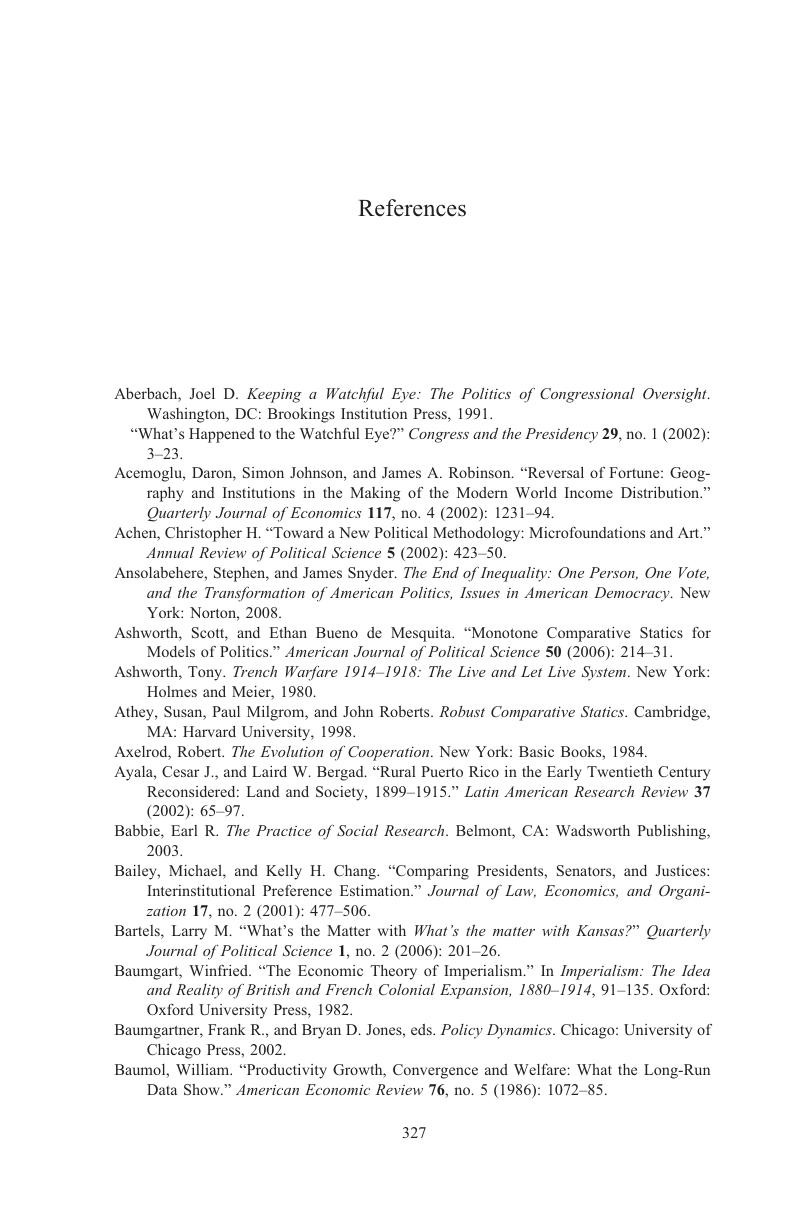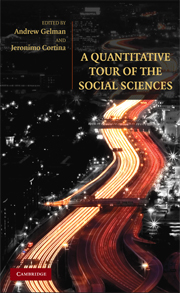Book contents
- Frontmatter
- Contents
- Preface: Learning to Think Like a Social Scientist
- About the Contributors
- PART I MODELS AND METHODS IN THE SOCIAL SCIENCES
- PART II HISTORY
- PART III ECONOMICS
- PART IV SOCIOLOGY
- PART V POLITICAL SCIENCE
- PART VI PSYCHOLOGY
- PART VII TO TREAT OR NOT TO TREAT: CAUSAL INFERENCE IN THE SOCIAL SCIENCES
- References
- Index
- References
References
Published online by Cambridge University Press: 05 June 2012
- Frontmatter
- Contents
- Preface: Learning to Think Like a Social Scientist
- About the Contributors
- PART I MODELS AND METHODS IN THE SOCIAL SCIENCES
- PART II HISTORY
- PART III ECONOMICS
- PART IV SOCIOLOGY
- PART V POLITICAL SCIENCE
- PART VI PSYCHOLOGY
- PART VII TO TREAT OR NOT TO TREAT: CAUSAL INFERENCE IN THE SOCIAL SCIENCES
- References
- Index
- References
Summary

- Type
- Chapter
- Information
- A Quantitative Tour of the Social Sciences , pp. 327 - 338Publisher: Cambridge University PressPrint publication year: 2009



